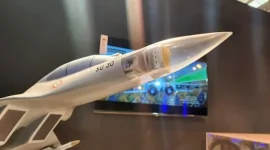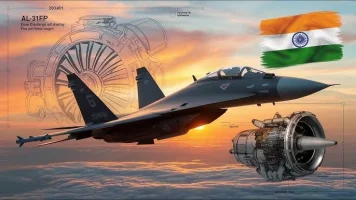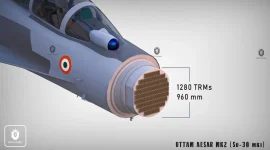- Views: 1K
- Replies: 9

The Aeronautical Development Agency (ADA) is pushing forward with plans to integrate advanced Helmet Mounted Display and Sight (HMDS) systems into its fighter aircraft programs.
In a recently issued Expression of Interest (EOI), the agency is seeking information from vendors capable of supplying proven HMDS technology that can be readily deployed. This initiative signals ADA's commitment to enhancing the capabilities of its aircraft with cutting-edge pilot assistance systems.
The EOI, issued on a No Cost No Commitment (NC/NC) basis, aims to gather crucial data to finalize technical specifications for the procurement and integration of HMDS systems. While not a guarantee of a future contract, it allows ADA to assess available solutions and make informed decisions regarding this critical technology.
Vendors responding to the EOI are required to provide detailed proposals outlining the costs for 10 HMDS systems, along with comprehensive plans for their integration into ADA's aircraft.
This includes demonstrating compliance with stringent aerospace standards such as DO-254 for hardware and DO-178B for software airworthiness qualification.
A key prerequisite is that the proposed HMDS system must have a proven track record, with prior flight experience on a fighter platform and demonstrated Line of Sight Computation capabilities.
The HMDS technology is poised to significantly improve pilot situational awareness and combat effectiveness. By providing real-time data and symbology directly within the pilot's field of view, the system enhances target acquisition, facilitates seamless night vision integration, and streamlines information management during critical missions.
ADA has outlined specific requirements for the HMDS, including:
- Robust self-test capabilities: The system must include Power On Self-Test (POST), Continuous Built-in-Test (CBIT), and Initiated Built-in-Test (IBIT) to ensure operational reliability.
- Lightweight and efficient design: Minimizing weight and power consumption is crucial for optimal aircraft performance.
- Personalized fit: The system should accommodate individual pilot preferences with adjustable liner fittings.
- Integrated audio and visual features: Spatial stereo audio with active noise cancellation and a color display are essential for effective communication and information display.
- Advanced tracking and night vision: The system must include an opto-inertial tracker and integrated Generation III Class B/C Night Vision Goggle (NVG) capabilities.
- Seamless aircraft integration: The HMDS should utilize ARINC661 CDS format protocol over 1553B/TSN/Ethernet for symbology generation and real-time data exchange with the aircraft.
While the EOI doesn't specify the aircraft programs, it is likely that the HMDS systems are being considered for the Tejas Light Combat Aircraft variants and potentially the Advanced Medium Combat Aircraft (AMCA) currently under development.



